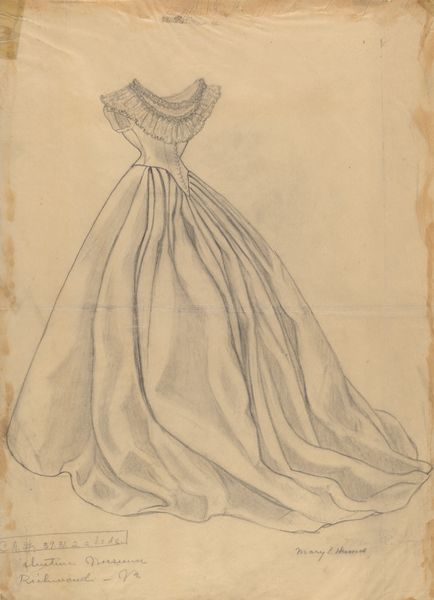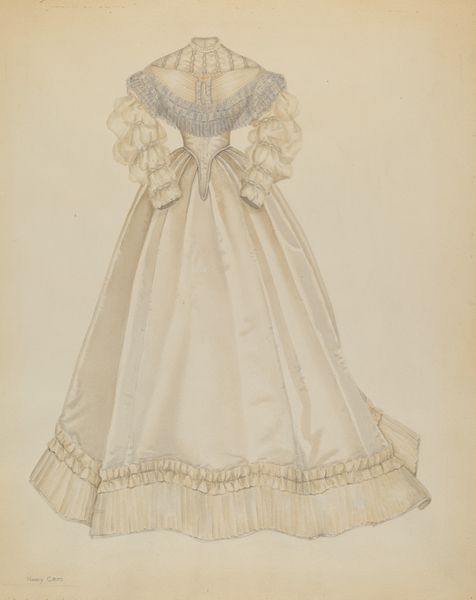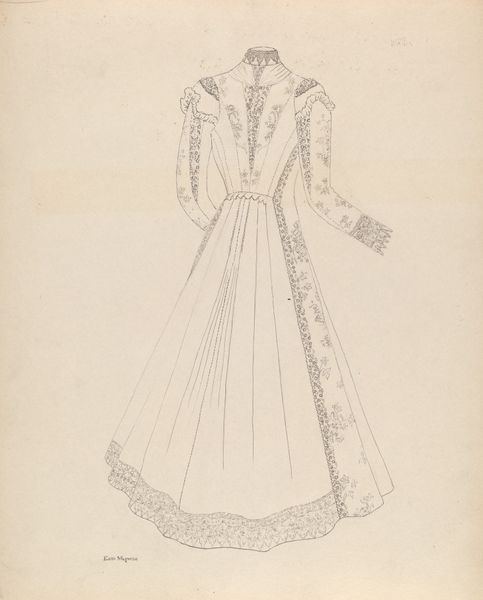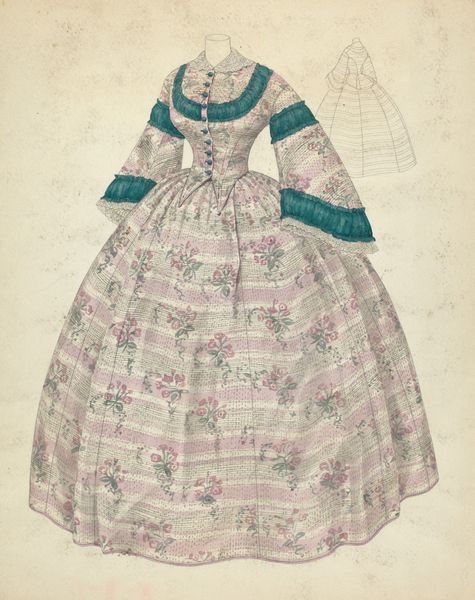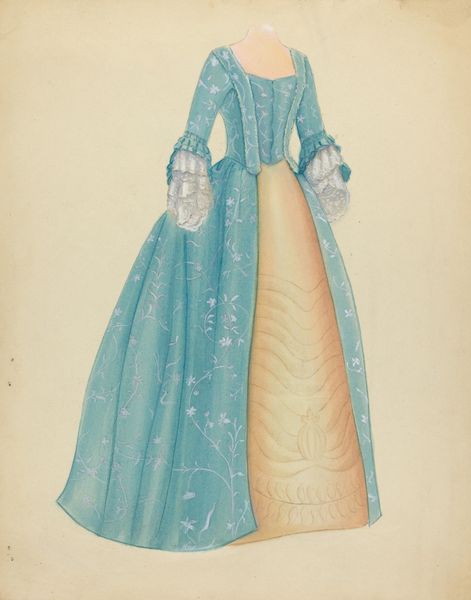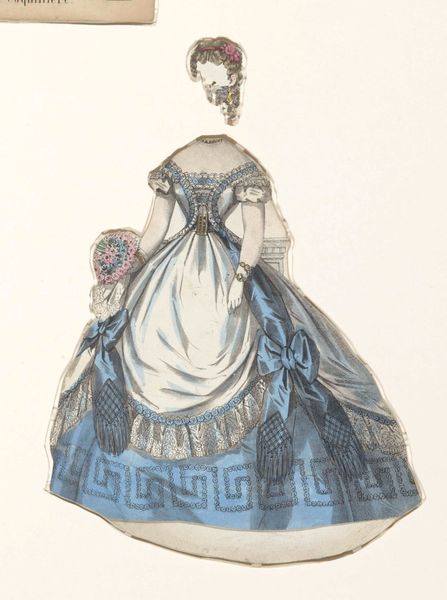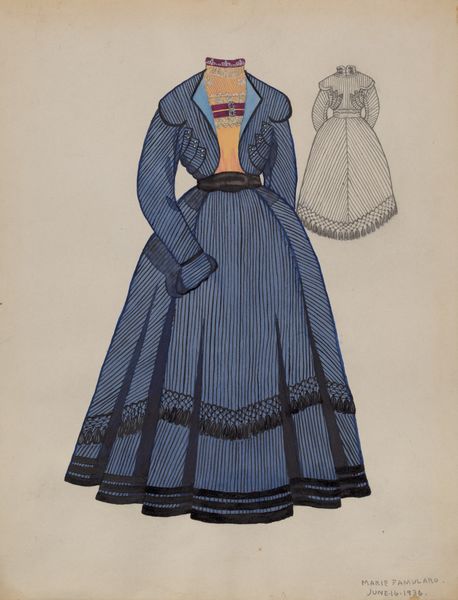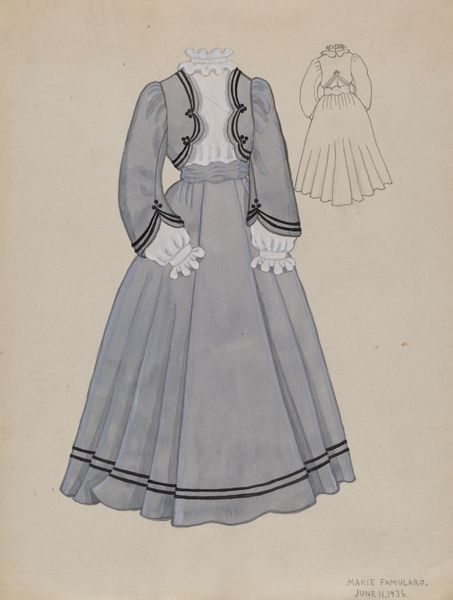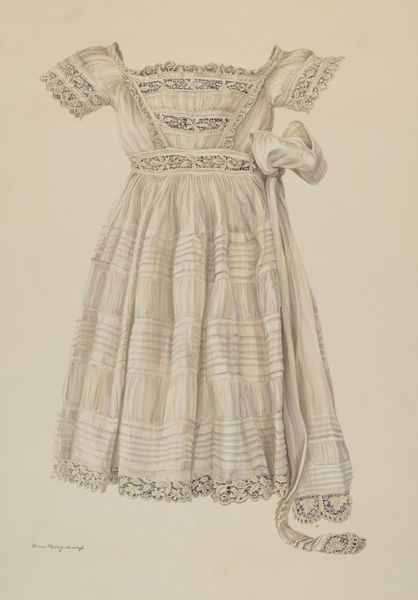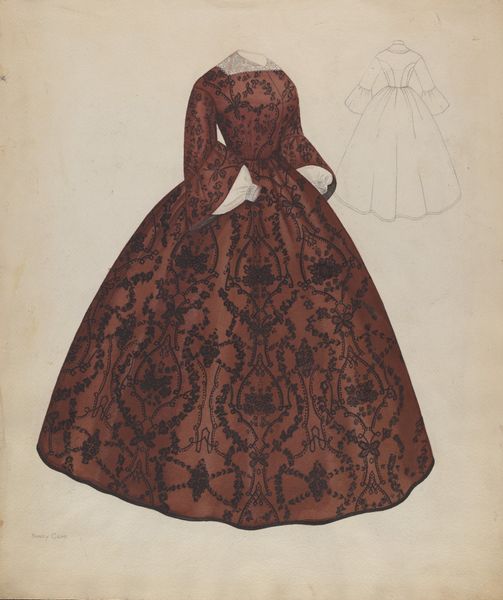
drawing, paper, watercolor
#
drawing
#
figuration
#
paper
#
watercolor
Dimensions: overall: 45.6 x 38.1 cm (17 15/16 x 15 in.)
Copyright: National Gallery of Art: CC0 1.0
Curator: Ah, this artwork has such an airy, fantastical feel about it. Almost like it's plucked from a dream... Editor: This is "Dress," a watercolor and drawing on paper by Jessie M. Benge, dating back to around 1937. The work depicts, unsurprisingly, a dress, though with an almost ethereal quality. Curator: Ethereal is the word. There’s this soft, muted palette…almost exclusively blues and whites…it gives it a vintage romance. Is it just me, or does it feel almost ghostly? There’s a faint second sketch, like a fading echo. Editor: The ghostly echo perhaps gestures to fashion as cyclical, both present and spectral. The meticulous rendering also draws attention to the constricting nature of such garments, symbols often of patriarchal expectations and societal constraints on women's bodies and mobility. Curator: You know, when I look closer, those bows feel…less celebratory and more like constraints. Like beautiful prisons made of ribbon. I’m now wondering, who was this woman, imprisoned in that silhouette? What was her life like? Was she happy in that confection? Editor: Exactly, that tension is what makes it resonate. It is crucial to see fashion not just as a superficial object, but a reflection of its epoch’s socio-political realities. Who made it, who wore it, under what conditions? These questions bring the image to life, providing depth. The dress acts almost as a case study connecting dress history to broader discourses on gender, labor, and class. Curator: It's like the artist, Benge, gives us both a celebration and critique rolled into one…beautiful but…trapped. I mean the way the drawing and watercolor merge - are we seeing possibility or something unattainable? It's that dance between aspiration and oppression, isn’t it? Editor: Precisely. It serves as a poignant reminder of the power of art to make us reflect critically, to invite empathy, and, ultimately, inspire societal changes. Curator: Yes, it encourages viewers to think critically and broadly about clothes—who knew fashion could be so deep. Editor: Indeed, revealing that there's so much more beneath the surface if we decide to really look.
Comments
No comments
Be the first to comment and join the conversation on the ultimate creative platform.
